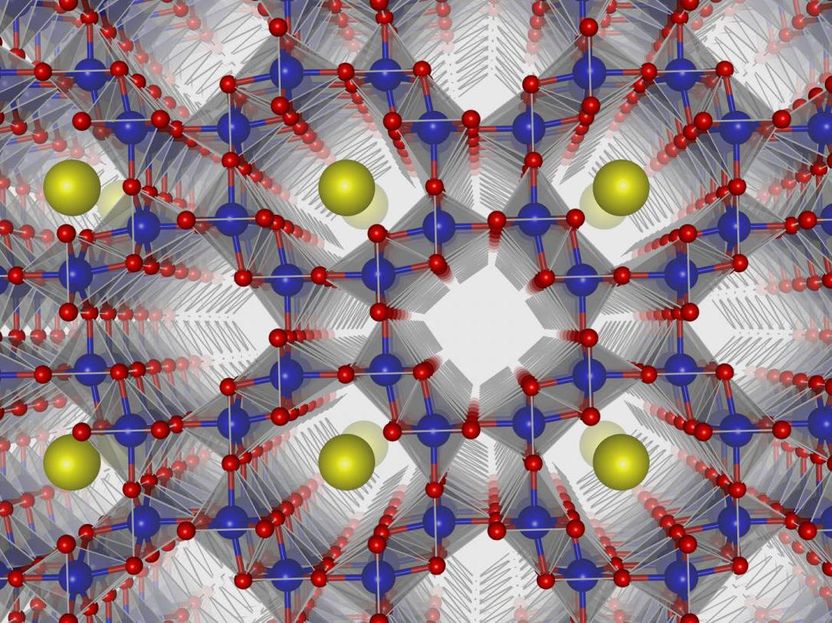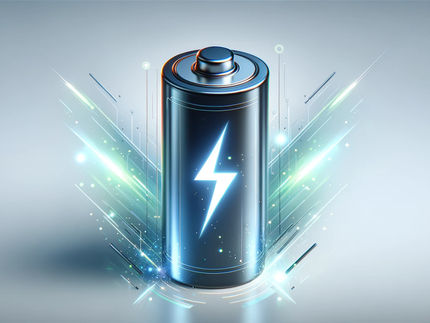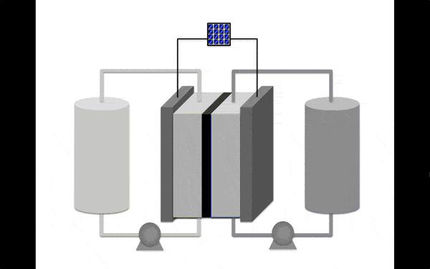Greater than the sum of its parts
When it comes to designing and optimizing mechanical systems, scientists understand the physical laws surrounding them well enough to create computer models that can predict their properties and behavior. However, scientists who are working to design better electrochemical systems, such as batteries or supercapacitors, don't yet have a comprehensive model of the driving forces that govern complex electrochemical behavior.

Argonne scientists are combining existing theories to form a more general theory of electrochemistry that predicts unexplained behavior. To do this, the researchers first studied alpha manganese oxide (shown here). Testing of this material and others is helping to predict material behavior as well as inform which changes could improve its performance.
Argonne National Laboratory
After eight years of research on the behavior of these materials and their properties, scientists from the U.S. Department of Energy's (DOE) Argonne National Laboratory, DOE's National Renewable Energy Laboratory and the University of Colorado-Boulder have developed a conceptual model that combines existing theories to form a more general theory of electrochemistry that predicts previously unexplained behavior.
The new model, called the Unified Electrochemical Band-Diagram Framework (UEB), merges basic electrochemical theory with theories used in different contexts, such as the study of photoelectrochemistry and semiconductor physics, to describe phenomena that occur in any electrode.
The research began with the study of alpha manganese oxide, a material that can rapidly charge and discharge, making it ideal for certain batteries. The scientists wanted to understand the mechanism behind the material's unique properties so that they could improve upon it.
"There wasn't a satisfying answer to how the material was working," said Argonne scientist Matthias Young, "but after doing a lot of calculations on the system, we discovered that by combining theories, we could make sense of the mechanism."
Extensive testing of several other materials has helped the scientists develop the model and demonstrate its usefulness in predicting exceptional phenomena.
"The model describes how properties of a material and its environment interact with each other and lead to transformations and degradation," said Young. "It helps us predict what will happen to a material in a specific environment. Will it fall apart? Will it store charge?"
Computational models using UEB not only enable scientists to predict material behavior, but can also inform which changes to the material could improve its performance.
"There are models out there that make correct predictions, but they don't give you the tools to make the material better," said Young. "This model gives you the conceptual handles you can turn to figure out what to change to improve performance of the material."
Because the model is general and fundamental, it has the potential to aid scientists in the development of any electrode, including those used for batteries, catalysis, supercapacitors and even desalination.
"We are gaining something that is more than the sum of its parts," said Young. "We have taken a lot of brilliant work by many different people, and we unified it into something that yields information that was not there before."
Original publication
"The Unified Electrochemical Band Diagram Framework: Understanding the Driving Forces of Materials Electrochemistry."; Advanced Functional Materials.
Other news from the department science
Most read news
More news from our other portals
See the theme worlds for related content
Topic World Battery Technology
The topic world Battery Technology combines relevant knowledge in a unique way. Here you will find everything about suppliers and their products, webinars, white papers, catalogs and brochures.

Topic World Battery Technology
The topic world Battery Technology combines relevant knowledge in a unique way. Here you will find everything about suppliers and their products, webinars, white papers, catalogs and brochures.
































































